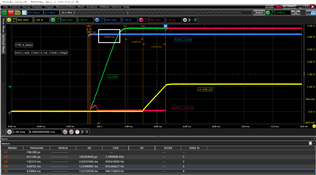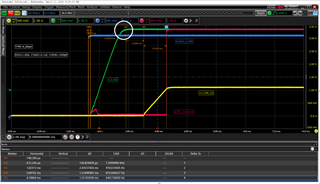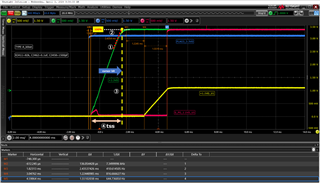Tool/software:
Previously, I received an answer regarding the variation regarding slow starts.
Parts variation
・Vref 0.6V ∓ 1%
・Iss:2.26uA - 2.32uA (rough estimate).
・Internal capacitor:3300pF ∓ 10%
Capacitor connected to SS terminal:4700pF ∓ 10%
I calculated it using a formula.

tss=1.84ms - 2.36ms
The actual measured value is not within the calculated range.
Please let me know the reason why it doesn't work.
For example,
・The cursor placement is not good.(Measured at 90% voltage rise)
・The information on the variation is different.
Other causes
Actual values:2.4354ms(white frame)
Voltage output by LMZ31506:+3.3V(green line)

The information you provide is very important to us.
Please respond with all questions by May 27, 2024.





